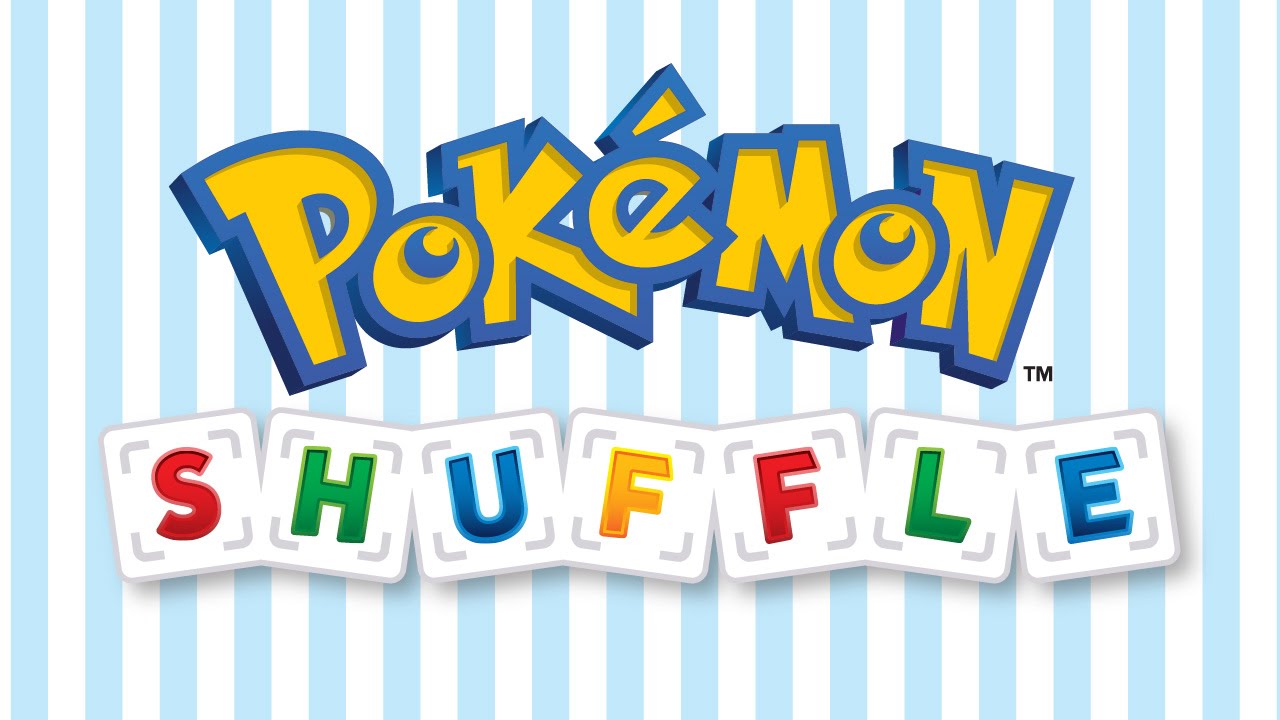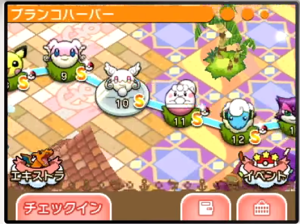Let’s get this out of the way – this is a game that will instantly draw comparisons with freemium mobile games like Candy Crush. It’s got all the right ingredients: free to download? Check. Increasingly difficult? Check. Match-three style puzzles? Check. Contains microtransactions that optionally make it easier to play? Check and mate.
But is this necessarily a bad thing? Let’s find out.
First off, I don’t play Candy Crush. I don’t even particularly like Candy Crush, although I downloaded it like about a billion other people, played 20 levels or so, then dismissed it’s repetitiveness. Besides, I have a 3DS with much better games to play.
And this is probably the rationale behind Pokémon Shuffle. If you have free games on your 3DS that can waste time in short bursts during your daily commute, or while waiting at the doctor’s, or wherever you normally pull out your smartphone to waste time, then surely this will keep you glued to your 3DS instead of your smart phone.
Nintendo wants you to play your 3DS. And the good news is that Pokémon Shuffle is actually pretty fun to play and can easily fill in a few minutes here and there at no cost. And there’s a lot more to it than you would expect from a free game.
Like any good Pokémon game, your ultimate goal is to catch Pokémon. Each level pits you against a new Pokémon, and its your ability to mix and match tiles that will deplete its HP until it’s yours for the taking. Sound simple? It gets a little more complicated, but that actually works in its favor, providing a richer experience.
Firstly, you won’t automatically catch the ‘mon after defeating it. Each pocket monster has a “catchability” percentage, enhanced by any remaining moves from your battle. You’ll have to replay the level to catch the one that got away, but you can move onto the next level regardless, as long as you defeated it in battle.
Secondly, you can choose up to four of your own Pokémon – the ones you’ve already caught – to take with you into battle. Each monster has different strengths and abilities, and the ones you’ve picked will level up after a successful battle.
The match-three dynamic is deceptively easier than other games in the genre, in that you can move your Pokémon anywhere in the grid, not just swap it with the one right next to it. It opens up many more possibilities and makes combos more fun. It also means a key ingredient in winning a battle is your strategy – use the stronger Pokémon, make 4-in-a-row combos, or use Mega evolutions to deal more damage. You’ll almost always have more than one choice to make, so make it count.
Most of the time, your battles are limited by a number of moves, so you have to defeat your opponent within that limit. Apart from the Main board, there’s a Special and an Expert board, with different dynamics like time limits rather than number of moves. These add to the variety and challenge, and I think these are the battles that will have you coming back for more and potentially spending money to complete.
There are three main collectibles in the game that you will use to get through – currency, if you will. Hearts, jewels and coins.
Have a Heart
Each battle will cost you a heart, and you start the game with five. Win or lose the battle, and it still costs one heart. Hearts are recharged at a rate of one heart every half an hour, so you’ll accumulate a full batch of five again after a couple of hours, but it stops at five.
If you don’t feel like waiting, you can also exchange jewels for hearts. One jewel will land you five hearts, but jewels themselves are a little harder to come by – they randomly appear after certain battles (I had found three jewels by level 20). Or you can buy more jewels with literal cash in the eStore. Enter the microtransaction.
The Jewel in your crown
Jewels cost about one dollar, and the more you buy, the cheaper it becomes per jewel. Here’s a handy list of prices across the globe (US$ / Euro / UK / AU$):
- 1 Jewel – $0.99 / €0.99 / £0.89 / $1.30
- 6 Jewels – $4.99 / €4.99 / £4.49 / $6.50
- 12 Jewels – $8.99 / €8.99 / £8.09 / $11.70
- 35 Jewels – $24.99 / €24.99 / £22.49 / $32.50
- 75 Jewels – $47.99 / €47.99 / £42.99 / $62.40
Jewels can be swapped for various quantities of hearts – more jewels bags you more hearts. Or you can trade them in for coins – the third and final form of currency in the game.
Flip a Coin
Coins can be used right before any battle to purchase additional moves, higher experience points or other options – may the odds ever be in your favor. You’ll earn 100 coins after each battle, and receive bonus coins for boss battles too, so these accumulate relatively quickly. You’ll also be offered the chance to trade coins to catch those pesky ‘mon that escape your Poké Ball.
Graphics-wise, the game is colorful and very much looks the part of a Pokémon game. The sounds are fine without being exceptional or annoying.
Honestly, a lot of people will probably be against this game from the outset simply because of its “freemium” nature, and whilst that’s understandable in the sense that one could potentially waste a lot of money on this thing, if you can control your spending urges, this game is definitely worth trying.
As a rough guide, you can expect to complete the first 10 levels without worrying about hearts in about 30-45 minutes. Recharging occurs seemingly fast in the background once you get back to daily life, and I’m already dipping in and out to play a few more levels, like so many Candy Crush victims before me.
Overall, Pokémon Shuffle is a puzzle game with a nice twist on a well-worn genre, and I’m already hooked after several hours and 25 levels. Okay make that 26. Ahem. There are plenty of familiar Pokémon to fight with and against, and it’s hard for me not to recommend this game. It’s free, it’s got a decent hook, and if you can avoid or ignore the microtransaction component – or even embrace it if that’s your thing – then you’re bound to enjoy it. The fact that you can’t keep playing – without paying – is the only drawback to a very addictive game.







June 29, 2015
[…] Nintendo’s very own, Jemma Casson, reviewed Pokemon Shuffle on Nintendo 3DS, gave it a 7.5 and had this to say about it, ” It’s free and fun and you […]
July 16, 2015
[…] Pokemon Shuffle is a free-to-play video game which can be found on the Nintendo 3DS, and has reached over 4 Million downloads since its initial release in February. Pure Nintendo’s very own, Jemma Casson, reviewed Pokemon Shuffle and that review can be found here. […]